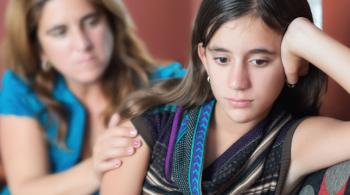
Left to right: Tatyana McFadden, Daniel Romanchuk,
Taylor Winnett and Noah Hanssen
By Katie Willmott
Cheers and excitement filled the air as a group gathered around a large screen to watch the opening ceremony of the 2024 Paris Paralympics. Kennedy Krieger Institute was hosting a special watch party, inviting staff members, Bennett Blazers athletes and their families to come together to witness a momentous occasion.
Four alums of the Bennett Blazers, Kennedy Krieger’s adaptive sports program for kids and teens with physical disabilities, were getting ready to compete in the Paralympics. Those four would be representing not only Team USA, but the program that introduced them to adaptive sports.
To the young Blazers at the watch party, these accomplished athletes were major celebrities—living proof that a disability doesn’t define a person, and that with hard work and determination, anything is possible.
“I often tell people I have the best job around,” says Gwena Herman, who co-founded the program with her husband, Gerry, in 1990. “I get to use sports as an avenue to help kids see and reach their potential.”
Tatyana the Titan

Tatyana McFadden
One of the athletes who credits the Hermans with helping her envision and accomplish her athletic possibilities is Tatyana McFadden.
Tatyana was born with spina bifida and participated in a variety of sports as a Blazer, but it was wheelchair racing that turned out to be her true passion. Today, her name is synonymous with the sport. It’s nearly impossible to think about wheelchair racing without also thinking about Tatyana McFadden.
Paris marked Tatyana’s seventh Paralympic appearance, which also proved to be a record-breaking moment in her career. Tatyana won a silver medal and a bronze medal, raising the total number of Paralympic track-and-field medals she’s won to 21, and making her the most decorated track-and-field athlete in American Paralympic and Olympic history, Tatyana says. (She has also won a medal for cross-country skiing.)
I can’t imagine how different my life would be if it weren’t for the Blazers.” – Daniel Romanchuk
Dynamic Daniel

Daniel and Hannah Romanchuk
It was actually Tatyana’s mother, Debbie, who introduced wheelchair racer Daniel Romanchuk and his family to the Blazers at a Spina Bifida Association event. The rest is history.
“It taught me not only about sports, but also about life,” Daniel says of his time with the program. “I can’t imagine how different my life would be if it weren’t for the Blazers.”
By the time Daniel concluded his Bennett Blazers career, he had become one of Kennedy Krieger’s most celebrated athletes. Now, he’s one of the most elite wheelchair racing athletes in the world.
Leaving Paris after competing in his third Paralympics, Daniel’s luggage was a bit heavier than it was on the way there. That’s because he was returning home with a gold medal and a bronze medal, bringing his total of Paralympic medals to four.
Noah the Noble

Noah Hanssen
Noah Hanssen was introduced to the Blazers while receiving care at Kennedy Krieger’s International Center for Spinal Cord Injury. Through years of competing in adaptive sports, he developed a love and talent for wheelchair fencing.
His dedication to the sport paid off, and he was named to Team USA’s 2024 Paralympic roster. During his time in Paris—his first Paralympics—he competed in four events, giving a strong performance that made the Bennett Blazers community proud.
Terrific Taylor

Taylor Winnett with swim coach George Leatherman
A series of back injuries and a diagnosis of Ehlers-Danlos syndrome dashed para swimmer Taylor Winnett’s collegiate swimming dreams. But while attending Loyola University Maryland in Baltimore, she was introduced to the Bennett Blazers and took up para swimming. Soon, her competitive swimming career was back on track, and she secured a trip to Paris.
Taylor competed in four para swimming events during her Paralympic debut, finishing in the top eight in two of them.
The Next Generation

Daniel Romanchuk with Bennett Blazers athlete Dakota
Shortly after winning his second medal, Daniel received a visit from Dakota, a young Bennett Blazers athlete who traveled to Paris specifically to watch Daniel and his fellow Bennett Blazers alums compete. Together, they posed for a photo, with Daniel wearing one of his medals, and Dakota holding the other.
Maybe the next time Dakota poses with a Paralympic medal, it’ll be one of her own.















